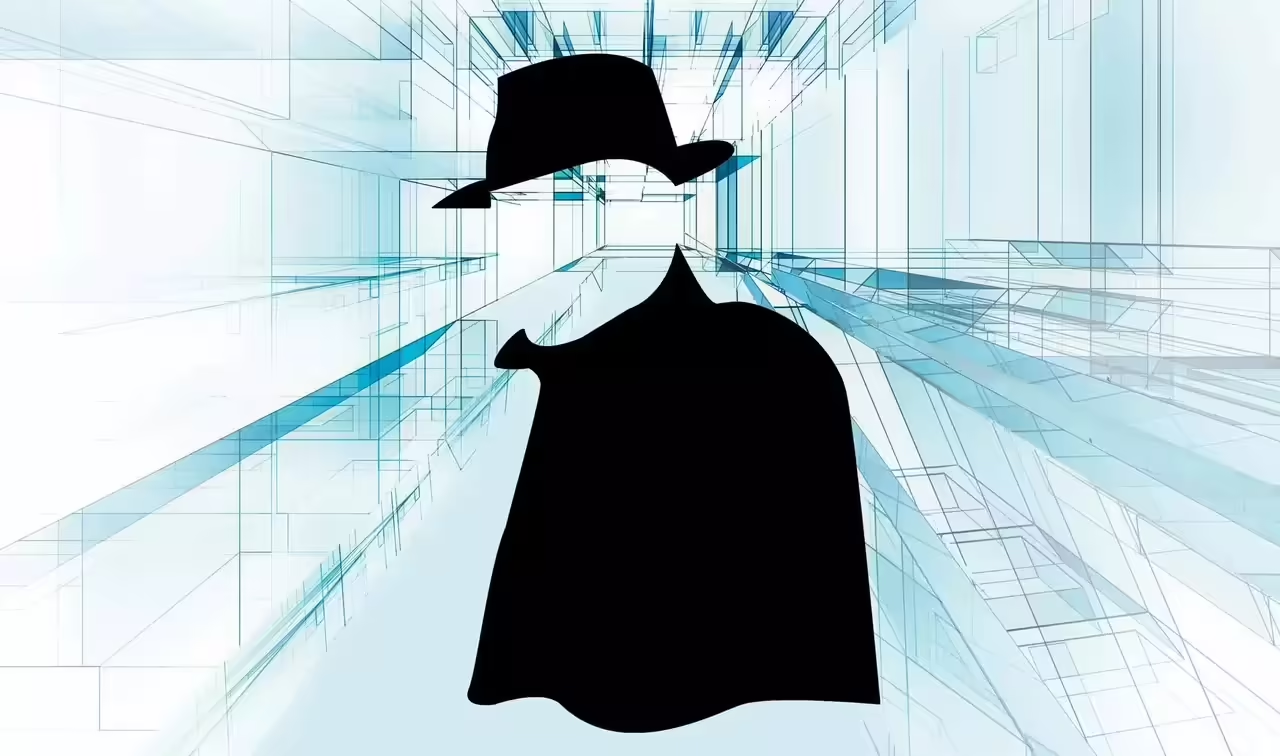
The quest for invisibility has fascinated humanity for centuries, from myths and legends to literature and cinema. However, in the world of modern science and technology, invisibility is not just a matter of fantasy but an achievable goal thanks to innovative advances inspired by nature.
In this article, we will explore the fascinating concept behind invisibility and its growing relevance in various scientific and technological fields. From the physics of light to metamaterials and nanotechnology, we will delve into the world of invisibility and how recent advances are transforming our understanding and application of this intriguing capability.
Inspiration in Nature: How Grasshoppers Have Guided the Development of New Camouflage Technology
Since time immemorial, nature has been an endless source of inspiration for human ingenuity. Living organisms, over millions of years of evolution, have developed ingenious solutions to survive and thrive in their environments. One of the most fascinating examples of this is natural camouflage, where animals have evolved strategies to hide from predators or stalk their prey.
Among the masters of camouflage are grasshoppers, small insects known for their ability to blend into their surroundings with surprising effectiveness. Researchers have closely studied these insects and have discovered a series of key characteristics that make them so adept at the art of camouflage. These observations have led to the development of new camouflage technology, directly inspired by nature.
One of the highlights of grasshopper camouflage is their ability to adjust the color of their bodies to match the surrounding environment. This is achieved through a combination of pigments in the insect’s skin and microscopic structures that manipulate light uniquely. These structures, known as nanostructures, can refract light in different ways, allowing the grasshopper to change its color to blend in with different backgrounds, whether green from grass or brown from tree bark.
In addition to color, grasshoppers also use their body shape and texture to blend in with their environment. Some species have bumps and spines that perfectly mimic the irregularities of leaves and branches, while others have patterns and markings that disrupt their shape and make it difficult for predators to detect them.
These natural abilities have inspired scientists to develop advanced camouflage technologies that mimic grasshopper mechanisms. By using metamaterials and nanofabrication techniques, researchers are creating surfaces that can change color and texture in a controlled manner, allowing objects and devices to blend into their environment similar to these insects.
This new camouflage technology has a wide range of potential applications, from the military, where it could be used to conceal vehicles and soldiers on the battlefield, to civilian applications such as architecture and product design. Furthermore, ongoing research in this field could reveal new insights into the physics of light and nanotechnology, further driving modern science and technology.
The Role of Biomimicry in Technological Innovation: Unveiling Grasshopper-Inspired Invisibility
Biomimicry, or the imitation of nature to solve human problems, has been a growing field in scientific research and technological development. From bird-inspired aircraft to gecko-based adhesives, scientists and engineers have found inspiration in the efficient designs and survival strategies of living organisms. One of the most recent and exciting examples of this approach is the development of invisibility technologies inspired by grasshoppers.
Grasshoppers, those small but remarkable insects, have been masters of camouflage in the animal kingdom for millions of years. Their ability to disappear into their surroundings has intrigued scientists and observers alike, and now it is serving as a model for a new generation of invisibility technology.
The principle behind grasshopper camouflage is based on their ability to manipulate light and adapt to different backgrounds. Like these insects, scientists are developing materials and devices that can change their appearance to become invisible to human eyes and surveillance cameras.
The key to this technology lies in understanding and replicating the unique characteristics of grasshoppers. For example, researchers have found that the skin of these insects is composed of nanostructures that can alter how light is reflected and refracted. By closely studying these nanostructures and the mechanisms that control them, scientists can design synthetic materials that mimic this behavior, allowing for the creation of devices that can change color and texture as needed.
In addition to visual camouflage, grasshoppers have also inspired the development of thermal camouflage technologies, leveraging their ability to regulate their body temperature in different environments. By replicating this capability in artificial devices, scientists are creating systems that can become invisible to heat sensors, opening up new possibilities in fields such as security and defense.
Development of Invisibility Technology: Scientific and Technological Advances That Made It Possible
The journey towards grasshopper-inspired invisibility technology has been a journey filled with discoveries and advancements in multiple scientific and technological fields. From observing nature to creating advanced synthetic materials, each step has been crucial in turning the idea of invisibility into a tangible reality.
Nature research: The first crucial step was the detailed study of organisms like grasshoppers, which exhibit natural camouflage abilities. Scientists examined the structure of the skin and physical characteristics of these insects to understand how they manage to hide in their environment.
Advancements in nanotechnology: Nanotechnology played a fundamental role in the development of invisibility technology. Researchers used nanofabrication techniques to create nanoscale materials with unique optical properties. These materials, known as metamaterials, can manipulate light precisely and controlled.
Design of synthetic materials: Building on the knowledge gained from nature and leveraging advancements in nanotechnology, scientists developed synthetic materials that mimic the characteristics of grasshoppers. These materials can change color and texture in response to external stimuli, such as light or heat, allowing them to blend into different environments.
Integration of technology: Finally, engineering advancements enabled the integration of this technology into practical applications. From wearable devices to military vehicles, invisibility technology has found a wide range of applications in various fields, driving innovation and creativity in the industry.
Principles of Grasshopper-Inspired Invisibility Technology
Grasshopper-inspired invisibility technology is based on fundamental physical principles that allow objects to camouflage in their environment, mimicking the natural abilities of these insects to hide from predators. The main principles behind this technology are light manipulation and structural adaptation, which enable objects to become invisible to the naked eye and detection devices.
Light manipulation: Grasshoppers’ ability to change color and texture is achieved by manipulating the light that falls on their bodies. This manipulation is carried out through nanostructures present in the insect’s skin, which can refract and reflect light in a controlled manner. Similarly, invisibility technology uses metamaterials with unique optical properties that can modify how light interacts with an object. By changing the structure of these materials, it is possible to control the reflection, refraction, and absorption of light, allowing the object to adapt to different lighting conditions and backgrounds.
Structural adaptation: In addition to manipulating light, grasshoppers also modify their body structure to blend into their environment. Some species have bumps and spines that mimic the irregularities of leaves and branches, while others have patterns and markings that disrupt their shape and make it difficult for predators to detect them. Similarly, invisibility technology uses flexible and adaptable materials that can change shape and texture as needed. These materials can deform or reconfigure in response to external stimuli, such as light or heat, allowing the object to effectively mimic its surroundings.
Potential Applications of Grasshopper-Inspired Invisibility Technology
Grasshopper-inspired invisibility technology has the potential to transform numerous fields, offering innovative solutions and benefits in various areas. From military applications to advances in medicine and beyond, this technology promises to open new frontiers in concealment and camouflage. Below are some of the possible applications:
Defense and security: In the military domain, invisibility technology could be used to camouflage vehicles, equipment, and soldiers on the battlefield, offering a significant tactical advantage by making detection by the enemy more difficult. Additionally, it could be applied in protecting critical infrastructure and intelligence and surveillance operations.
Surveillance and espionage: In the field of intelligence and security, invisibility technology could be used to create covert surveillance devices that are virtually undetectable to observers. This would allow for discreet and effective surveillance operations in urban and rural environments.
Medicine and surgery: In medicine, invisibility technology could be used to develop less invasive medical devices, such as endoscopes and catheters, that are less detectable to the human body. This could reduce trauma and the risk of complications during surgical procedures, improving outcomes for patients.
Architecture and urban design: In urban design and architecture, invisibility technology could be used to integrate buildings and structures more harmoniously into their surroundings, reducing their visual and environmental impact. Additionally, it could be applied in creating screens and exterior cladding that dynamically adapt to environmental conditions and aesthetic preferences.
Entertainment and marketing: In the fields of entertainment and marketing, invisibility technology could be used to create immersive experiences and interactive advertising that surprise and captivate audiences. This could include creating scenarios and special effects in movies and live shows, as well as innovative advertising campaigns that use camouflage as a creative tool.
Challenges and Limitations of Grasshopper-Inspired Invisibility Technology
Despite significant advances in the development of grasshopper-inspired invisibility technology, there are still technical challenges and limitations that need to be addressed for its broader and more effective implementation. Some of these challenges include:
Efficiency and scalability: Currently, many of the materials and devices used in invisibility technology are expensive to manufacture and may not be scalable for large-scale commercial applications. Improving efficiency and reducing production costs are important challenges to make this technology more accessible and widely adopted.
Stability and durability: Some materials used in invisibility technology may be susceptible to environmental damage or degradation over time, limiting their utility in long-term practical applications. Improving the stability and durability of these materials is crucial to ensure consistent and reliable performance in various conditions.
Adaptability to different environments: Invisibility technology may perform well in controlled laboratory environments but may face challenges in real and changing environments. The ability to adapt to a variety of environmental conditions and backgrounds is critical to its effectiveness in real-world applications such as defense and surveillance.
Detection and countermeasures: As invisibility technology advances, more advanced detection methods are likely to be developed as well. Researchers must anticipate and address potential countermeasures to ensure that the technology remains effective and is not easily detectable by surveillance and detection systems.
Ethics and safety: As with any new and powerful technology, it is important to consider the ethical and safety implications of invisibility technology. This includes concerns about the misuse of the technology for nefarious purposes, as well as potential impacts on the privacy and security of individuals.







